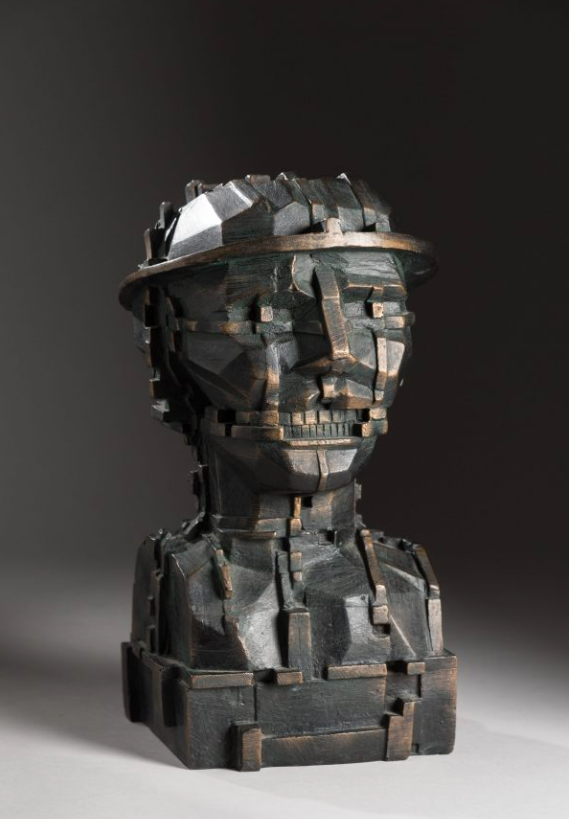British Art's Post-War Renaissance
Evolution of British Art
The post-war period was a time of extraordinary artistic transformation, moving away from traditional styles towards more experimental and abstract forms. This evolution was influenced by the trauma of World War II and the influx of international artistic movements, particularly from New York. The School of London, a loosely associated group of figurative painters including Francis Bacon and Lucian Freud, sought to reinvent representational art for the modern era. They combined elements of Renaissance and Impressionist techniques with a raw, emotive style that reflected the psychological complexities of the post-war world.
Simultaneously, artists like John Latham and Gustav Metzger explored new mediums and conceptual approaches, challenging conventional notions of art. The period also saw a revival of landscape painting, with artists like John Piper incorporating architectural elements and responding to the changed post-war environment. This diverse artistic landscape laid the groundwork for the vibrant contemporary British art scene, fostering a spirit of innovation and experimentation that continues to this day.
Influential Post-War Artists
Francis Bacon, Lucian Freud, and L.S. Lowry emerged as key figures in post-war British art, each contributing a unique perspective to the evolving artistic landscape. Bacon's raw, emotionally charged paintings often depicted distorted human figures, reflecting the psychological trauma of the war era. Freud's intense, unflinching portraits explored the complexities of the human psyche, while Lowry's distinctive industrial scenes captured the essence of working-class life in northern England. Other notable artists of this period included:
David Hockney, who gained recognition for his vibrant Pop Art-influenced works
Frank Auerbach, known for his thickly layered, expressive paintings
Eduardo Paolozzi, a pioneer of British Pop Art and sculpture
Henry Moore, whose abstract bronze sculptures revolutionised modern sculpture
These artists collectively shaped the post-war British art scene, pushing boundaries and redefining artistic expression in the face of societal change.
Women and Marginalised Artists
The post-war era saw increased recognition for women and marginalised artists in Britain, challenging the traditionally male-dominated art world. Eva Frankfurther, who arrived in Britain as a child refugee in 1939, developed compassion for marginalised communities and found inspiration working among ethnically diverse staff at a Lyons Corner House.
Shirley Baker's vibrant colour photographs captured the vitality of working-class communities in Manchester, particularly in areas like Hulme undergoing significant urban redevelopment. Other notable figures included Sylvia Sleigh, known for her portraits subverting traditional gender roles, and Gillian Ayres, whose abstract expressionist works gained prominence. These artists, along with others like Jean Cooke and Magda Cordell, played a crucial role in broadening the scope of British art and ensuring diverse perspectives were represented in the post-war artistic narrative.
British Pop Art Emergence
British Pop Art emerged as a significant movement in the post-war period, challenging traditional artistic norms and reflecting the changing social landscape. Artists like Richard Hamilton and Eduardo Paolozzi pioneered this style, drawing inspiration from popular culture, consumerism, and mass media.
Their work often incorporated elements from advertising, comic books, and everyday objects, blurring the lines between high art and popular culture. This movement gained momentum in the 1950s and 1960s, coinciding with Britain's economic recovery and the rise of youth culture, providing a vibrant and often satirical commentary on contemporary society.
A Bridge to Contemporary Art
The post-war art scene served as a vital bridge, transforming British art from its pre-war traditions to the diverse, globally influential contemporary scene we see today. Post-War artists not only transformed the landscape of British art but also resonated on a global scale, influencing countless artists and movements.
The conceptual approaches pioneered by artists like John Latham in the post-war era paved the way for the provocative installations of contemporary artists like Damien Hirst and Tracey Emin. Similarly, the focus on identity and marginalized voices, which gained traction in the post-war period, has become a central theme in contemporary British art, as seen in the works of artists like Chris Ofili and Yinka Shonibare.




